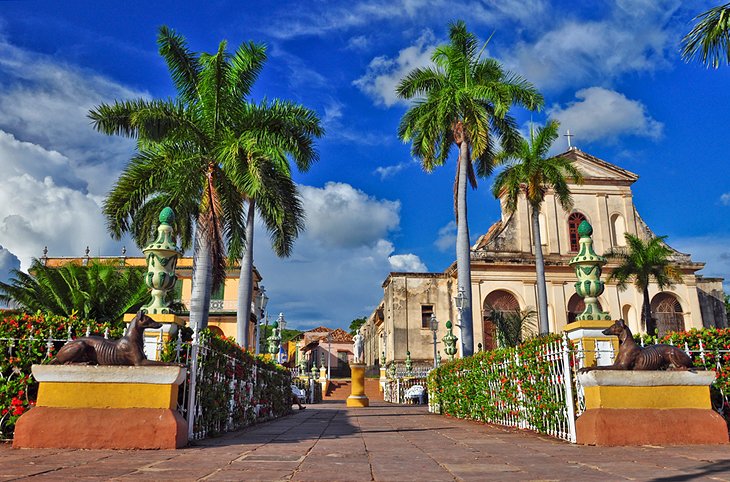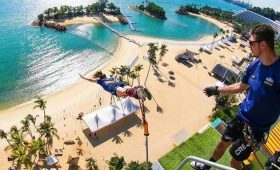High quality Colombia, Argentina and Cuba vacation attractions using VPN for travel: Why do I need a VPN? You need a VPN to ensure that nobody has access to your private information. When you use a VPN your activity online just looks like encrypted jumbled garbage. People snooping on your activity just see a jumbled string of letters, numbers and symbols that cannot be read. Normally, sitting between your device and the internet there are two things. The local network (wifi) and the ISP (Internet Service Provider). When you use a wifi network anyone who has access to that network and possess basic-moderate computer skills can see what you’re doing and what you’re searching for online. They can look over your digital shoulder and watch everything you do online. And in particular, public and unsecured wifi networks are a magnet for bad actors looking to steal information. You might as well be handing your passwords to a thief when you use unsecured wifi without a VPN. See more information at Digital Nomad in Argentina.
Back in the 1600s, during the Spanish colonial period, a number of Jesuit missions were founded in the northern province of Misiones, near the border with Brazil. At one point, over 3,000 Indigenous people lived in the mission, but as the Jesuits left the country, the buildings fell into ruins. Now a UNESCO World Heritage Site, the San Ignacio Mini are the largest and still best-preserved mission ruins in the country. The original mission – built in red-brown stone in a style known as Guaraní Baroque -– was massive and included a monastery, a cabildo (administrative office), a cemetery, and a number of living spaces. The mission’s church, which measured 74 meters long by 24 meters wide, is the best-preserved part of the ruins. A small on-site museum tells the story of the mission, and there’s a scale model of the original San Ignacio Mini.
It’s the most northerly point in South America, so perhaps it’s only fitting that La Guajira is unlike anywhere else on the continent. This remote and little-visited peninsula is a quiet oasis of sweeping sand dunes, bird-covered mangrove swamps, and vast stretches of empty land where the orange-brown La Guajira Desert meets the turquoise Caribbean Sea. Indigenous beliefs are the law of the land here, as the peninsula is home to the proud Wayuu people, who were never subjugated under Spanish rule and maintain a vibrant culture to this day. Keep in mind that tourism is still new in La Guajira, and the ride in from the regional capital of Riohacha requires both patience and a sense of adventure. The windsurfing Mecca of Cabo de la Vela has the most tourism infrastructure and will likely be your best entry point into the region.
Conceived in 1901 and partly built in 1902 and beyond, the Malecon is Havana’s famous seafront promenade. A walk along this top Havana attraction is a stroll through the history of the city. The promenade runs seven kilometers from the Habana Vieja quarter to the Vedado, the central business district. Along the way, you will find an assortment of well-preserved 20th-century buildings that represent a mixture of architectural styles, including Art Deco and Neo Moorish. Painted in pastel pinks and yellows, the buildings are a photographer’s delight, especially in the golden glow of dusk. People-watching is a favorite pastime here. Young lovers saunter hand-in-hand, local fishermen cast their lines, and children clamber along the sea wall.
The world’s third-largest producer of coffee beans, Colombia is a fantastic country for tastings and tours. The vast majority of production takes place in the subtropical Andean hills west of Bogota between the small cities of Armenia, Pereira, and Manizales. This region, known as the Eje Cafetero (or Coffee Axis), is home to a growing number of coffee plantations that have opened up their operations to the public in recent years for tours, tastings, and lavish farm stays. These small (and often organic) plantations are the kind of places where the farmer-owner might take an hour out of his day to explain the process of how a humble “cherry” turns into a coffee bean that will one day be roasted and ground into a latte back home. The small resort town of Salento is easily the most attractive place to base yourself, with numerous farm tours nearby and plenty of things to do. You’ll also have easy access to attractions like Cocora Valley, home to the tallest palm trees in the world. You can rent bicycles from Salento to explore the region under your own steam or ride on one of the old-fashioned Willy jeeps that serve as the town’s de facto taxis.
My first day seeing sunshine in a couple of weeks, without hesitation I booked the first Airbnb I could find. And of course, I went out drinking. That night I wandered out onto my stoop to get wifi and noticed all the police had retreated from my area at about 10pm. Then the knives came out. Still unable to freely travel into and out of Cuba the tourists had all left. And the average Cuban relies on tourists to make ends meet. As you’d imagine by mid 2021, having been without tourists for 18 months things were starting to boil over among the less affluent populations in Cuba. So when I stepped out of my front door to get wifi and noticed all the police had taken off, I learnt that a running gang battle involving large knives, broken bottles and bricks had erupted. Right on my door step. Fantastic. Discover more info at https://inlovelyblue.com/.
One of South America’s most attractive cities (also one of the largest), Buenos Aires is often the first glimpse of Argentina most visitors will have before heading off to popular tourist destinations such as Patagonia. But the smart ones will linger here and take in the many delightful museums and art galleries housed in the splendid old colonial buildings spread across the city’s districts or barrios. Be sure to visit La Boca, Buenos Aires’ most colorful neighborhood and home to the quirky Caminito Street Museum, a splendid pedestrian zone and open-air museum popular for its brightly painted houses, amusing sculptures, cafés, music, and tango dancers in the streets. Fashionable Recoleta is another must and is where you’ll find the Recoleta Cemetery, with its elaborate mausoleums containing the remains of such famous Argentinians as Eva (Evita) Perón, along with numerous public gardens, museums, art galleries, cafés, and boutique shops. Other districts to explore if time permits are Palermo and Belgrano with their wide boulevards and palatial mansions, and, in the downtown core, the delightful Plaza de Mayo.
Exploring the town of Trinidad, Cuba, a UNESCO World Heritage Site, is like stepping back in time. The beautifully restored buildings and cobblestone streets in the city center exude a quaint colonial feel. Much of the architecture dates from the 17th to the 19th centuries, when Trinidad prospered from both the sugar and slave trades. Today, Trinidad is one of the best cities in Cuba to visit, apart from Havana. You can soak up its lively ambience in the cobblestone Plaza Mayor, the city’s central square. Above the square stands the neoclassical Church of the Holy Trinity (Iglesia Parroquial de la Santisima Trinidad). Other Trinidad highlights are the Church and Monastery of Saint Francis (Iglesia y Convento de San Francisco), with its distinctive bell tower; the Museum of Colonial Architecture (Museo de Arquitectura Colonial); the art gallery at the Casa de Aldeman Ortiz; and the Palacio Brunet, a grand home built in 1812 and still featuring original frescoes and marble floors. East of Trinidad, on the road to Sancti Spiritus, the lush World Heritage-listed Valle de los Ingenios contains numerous relics and monuments from the 19th century, when the sugar cane plantations and mills flourished. One of the best things to do in Trinidad, Cuba is simply drive or horseback ride through the beautiful scenery of green sugar cane fields, palm trees, and mountains.



